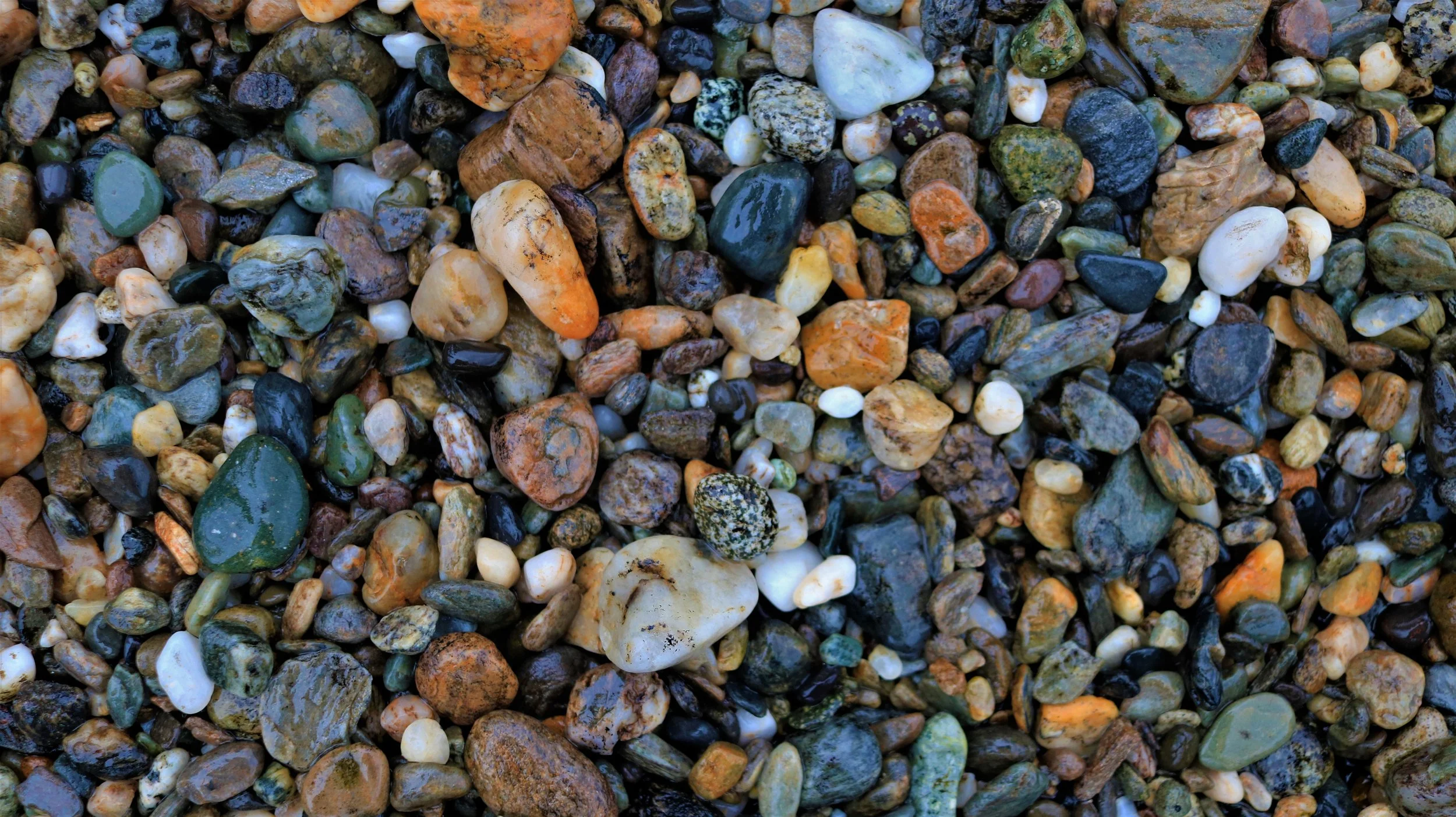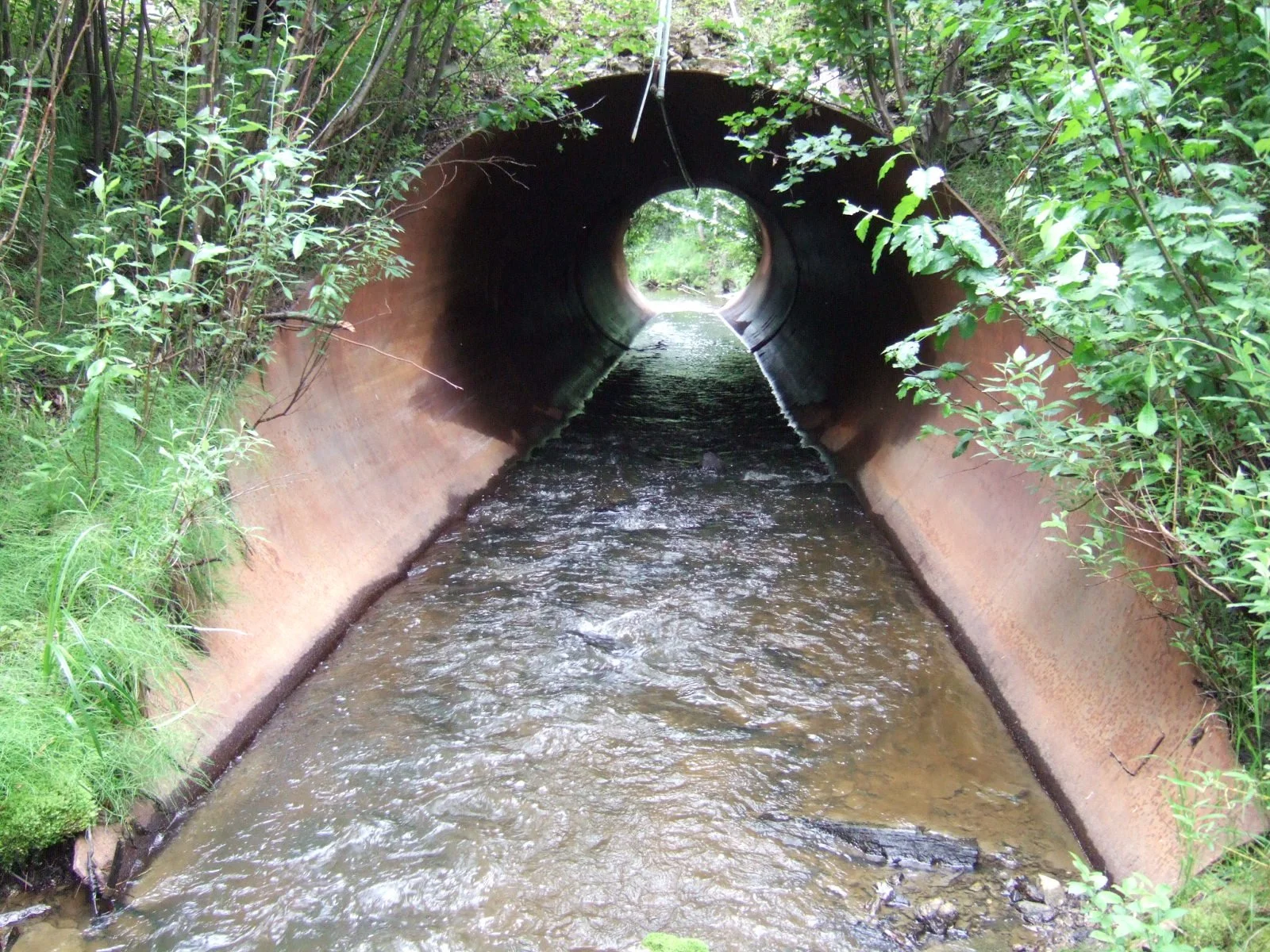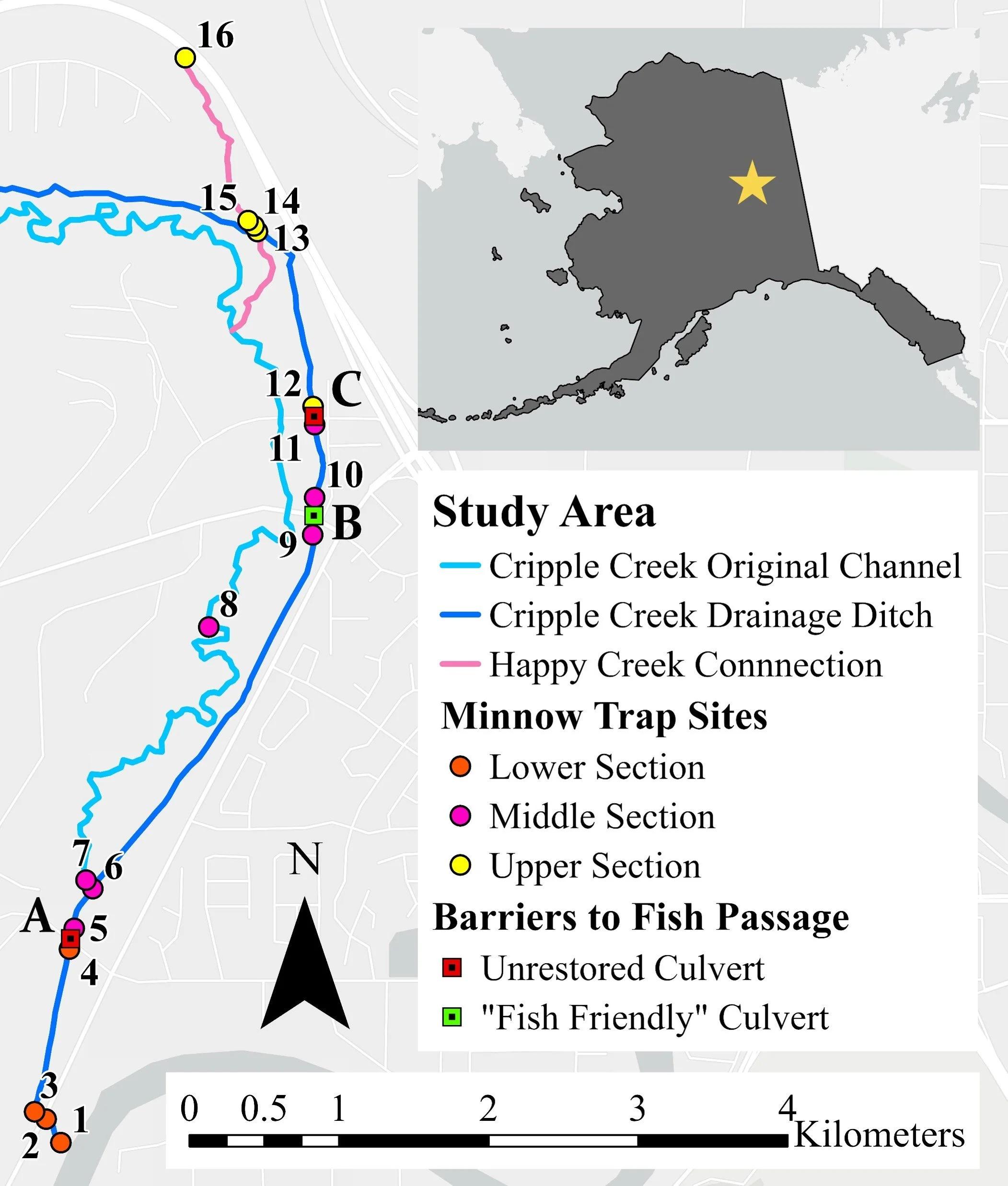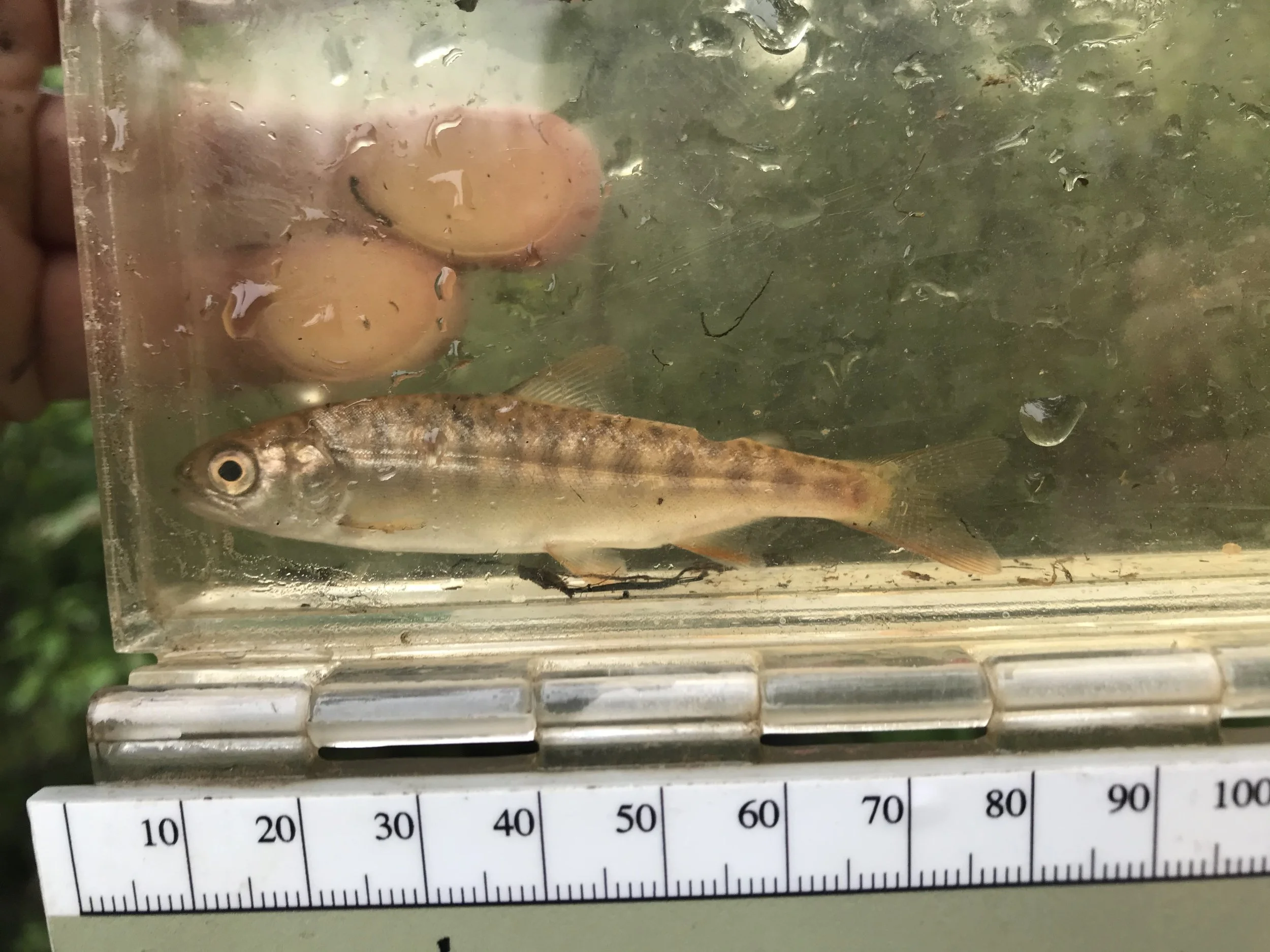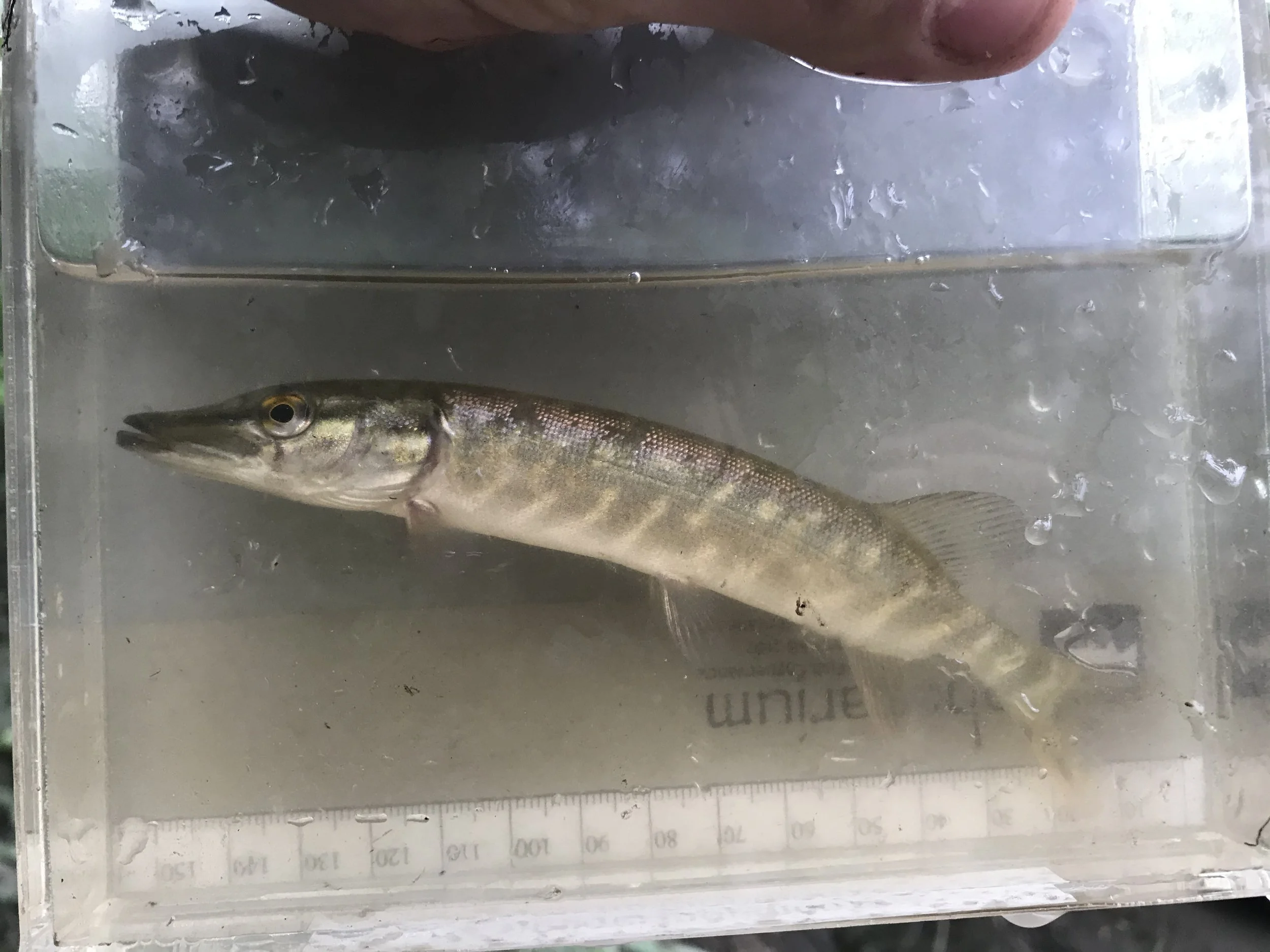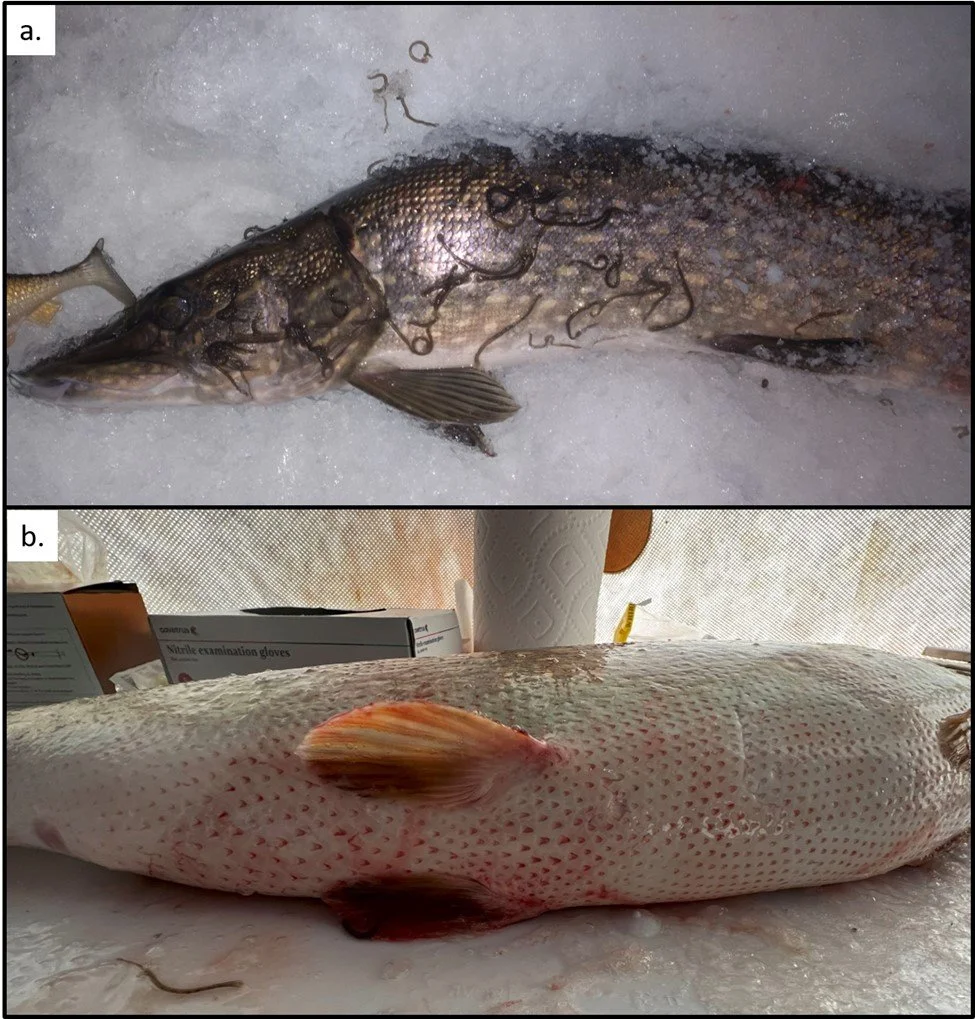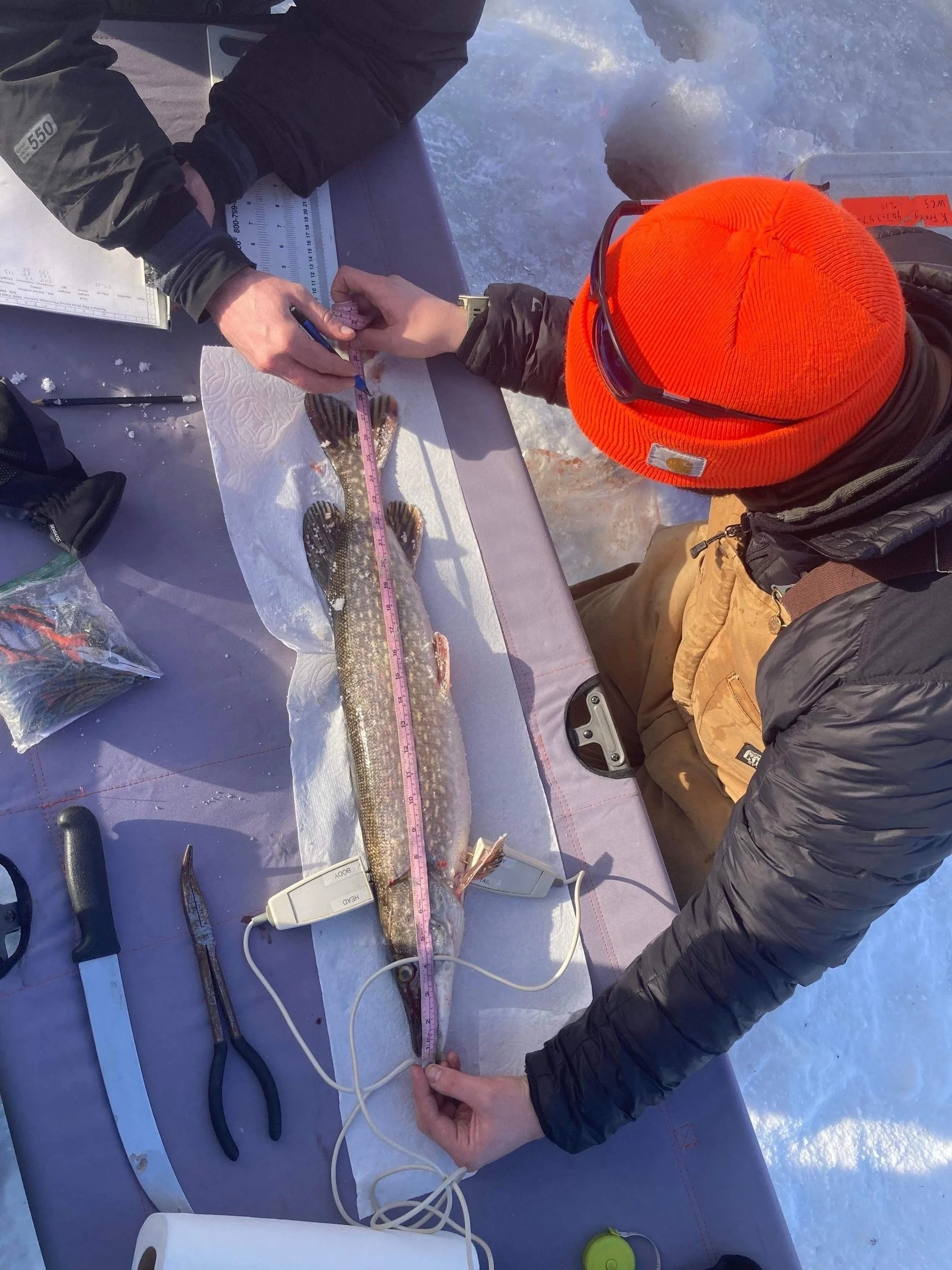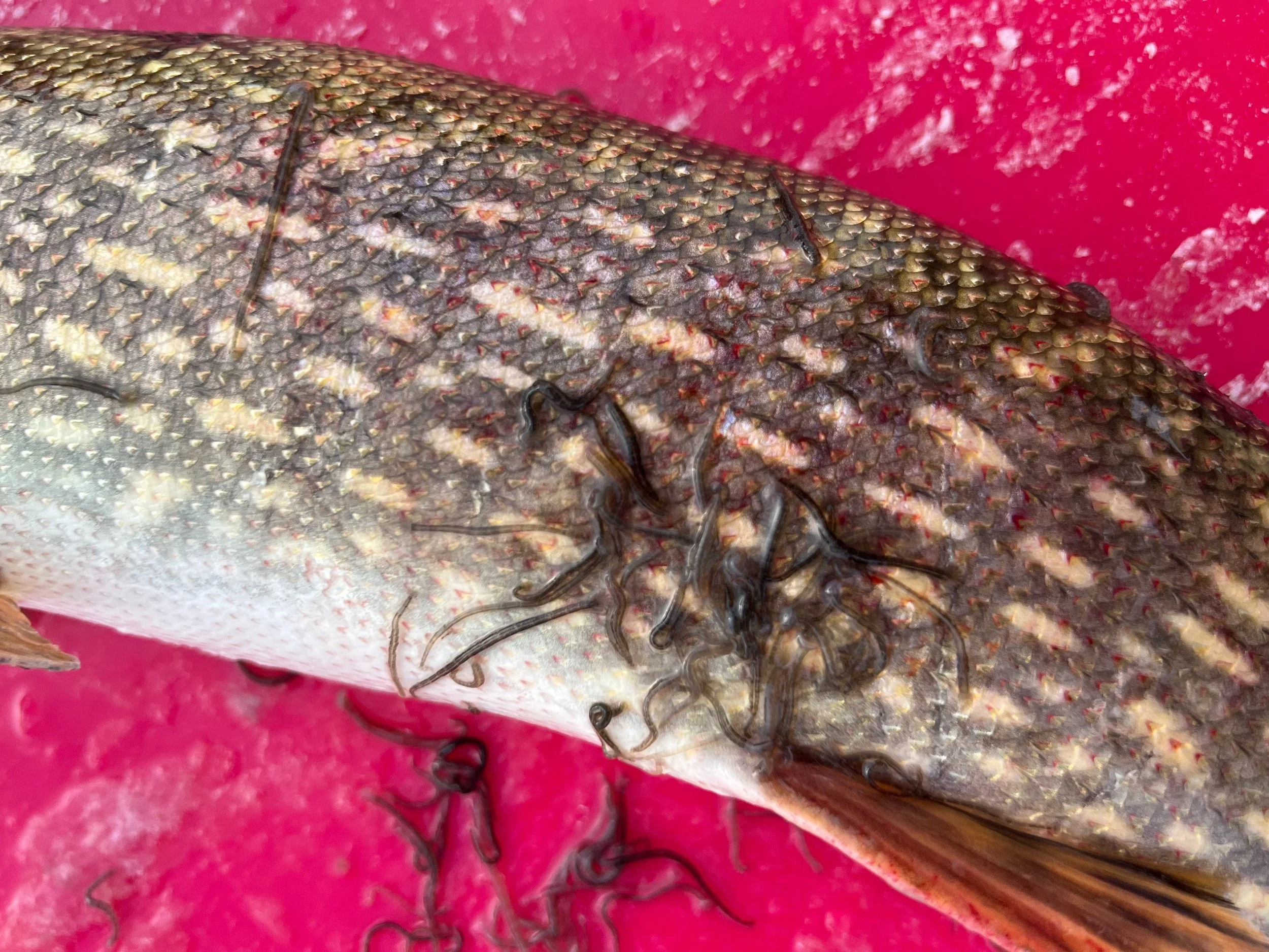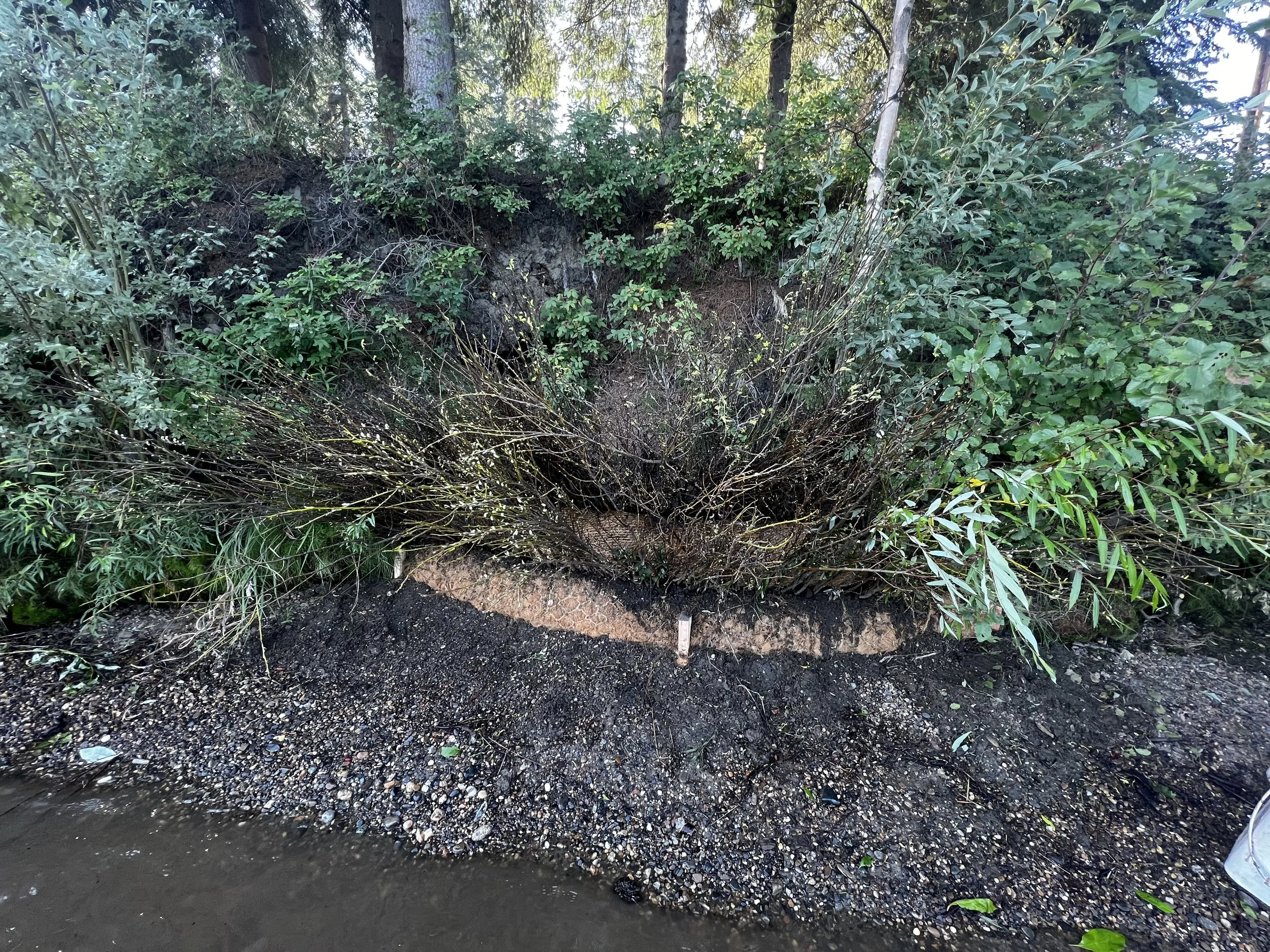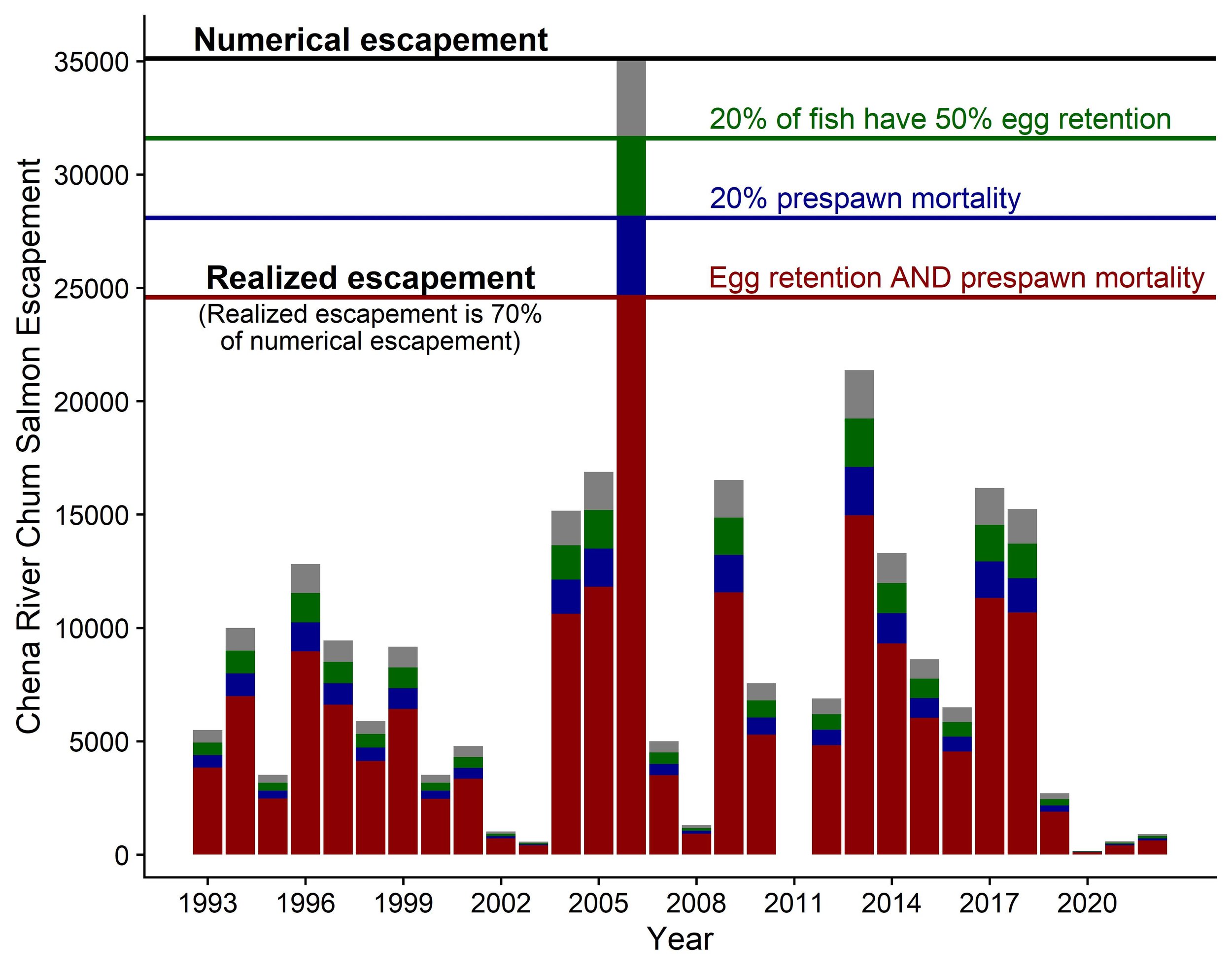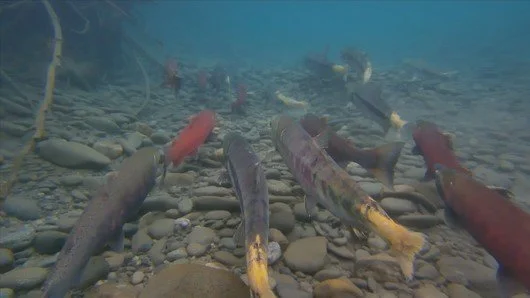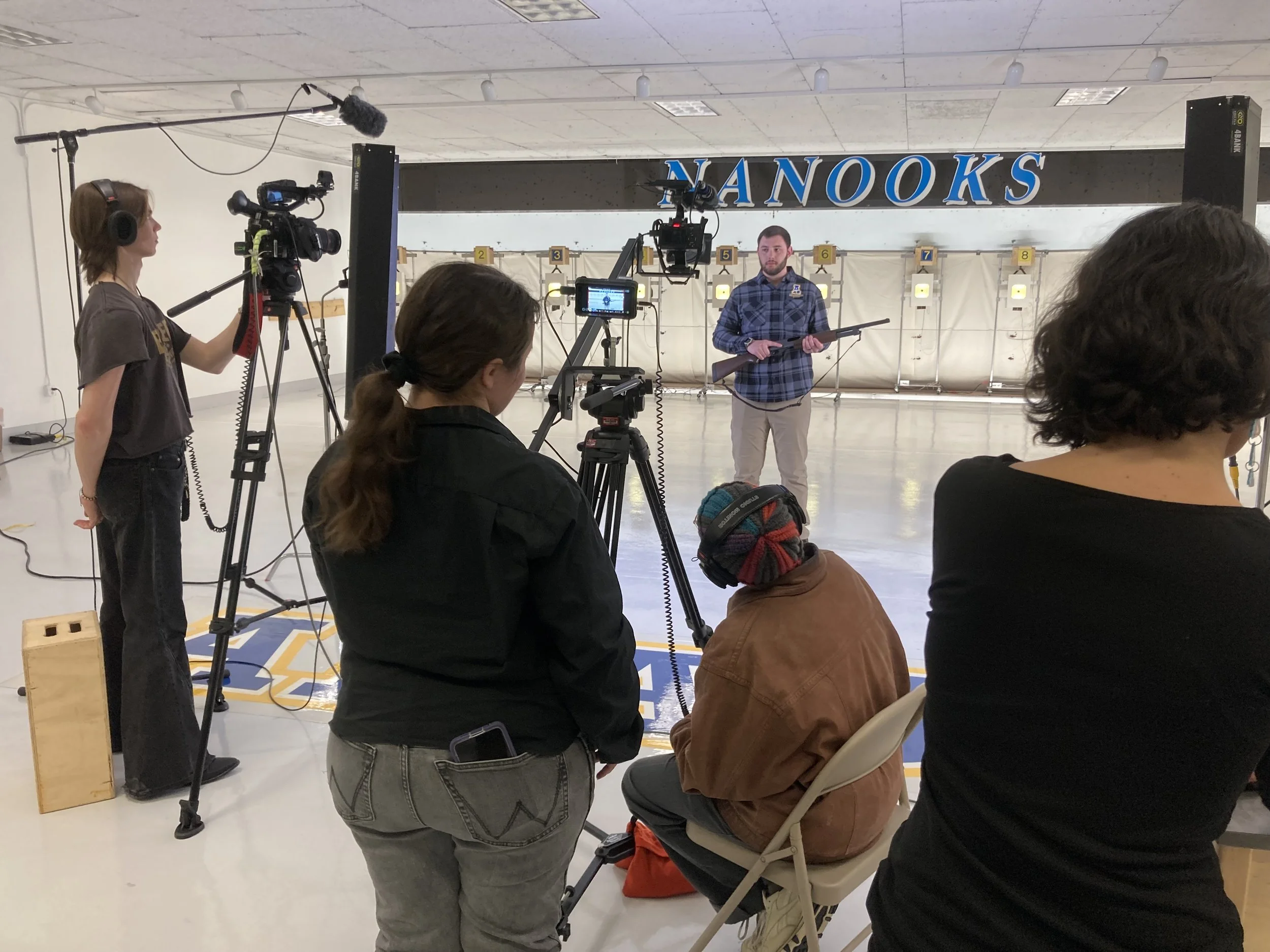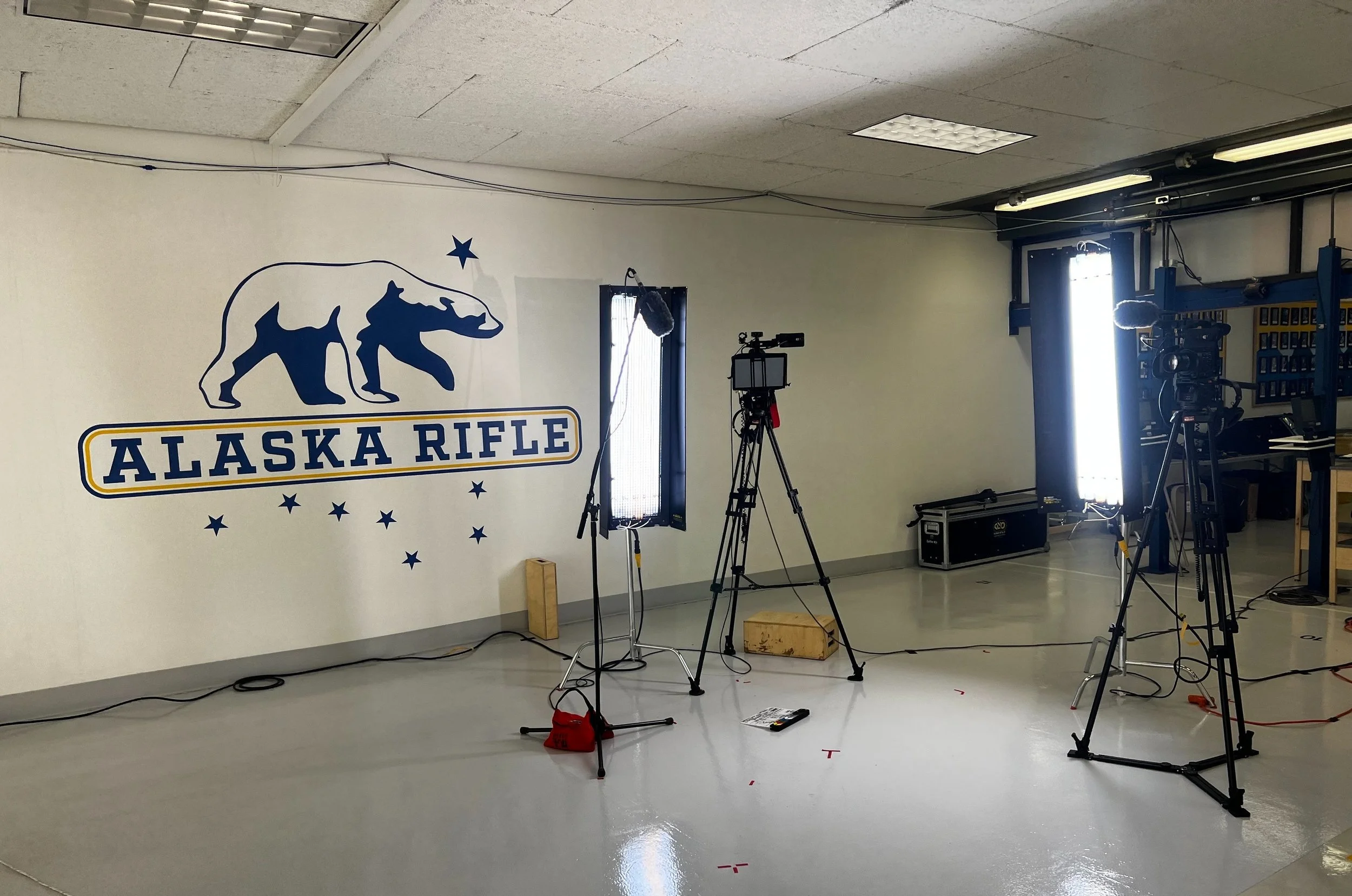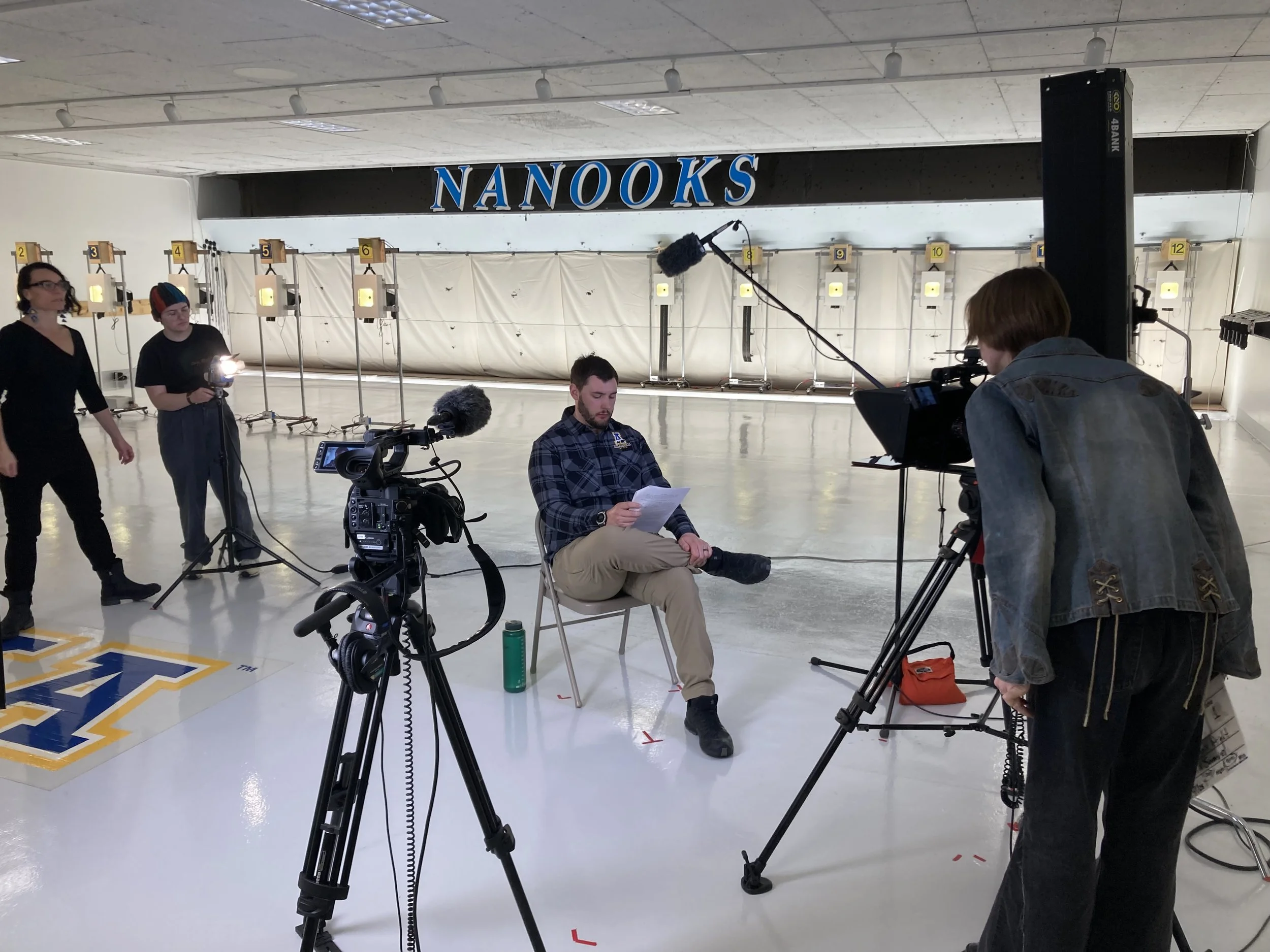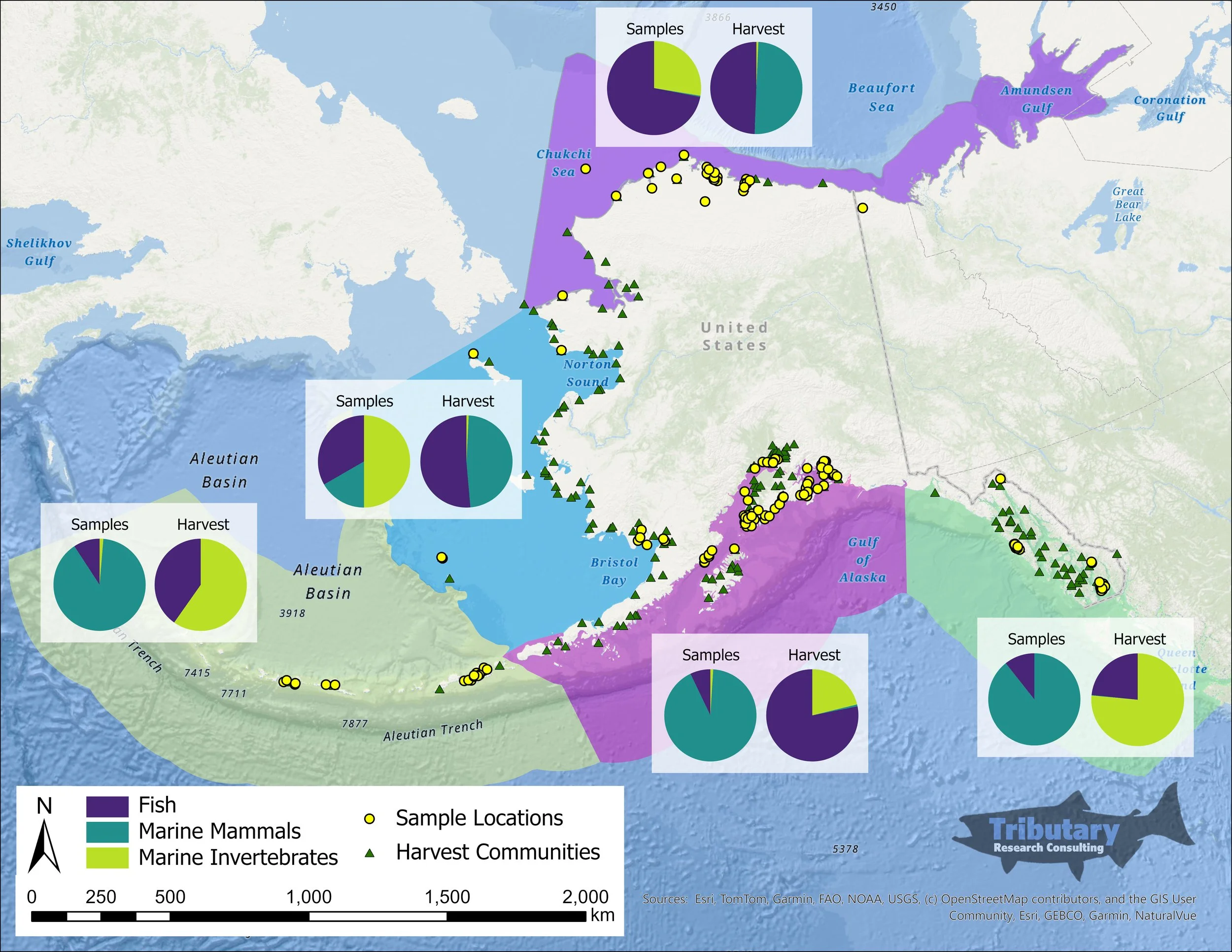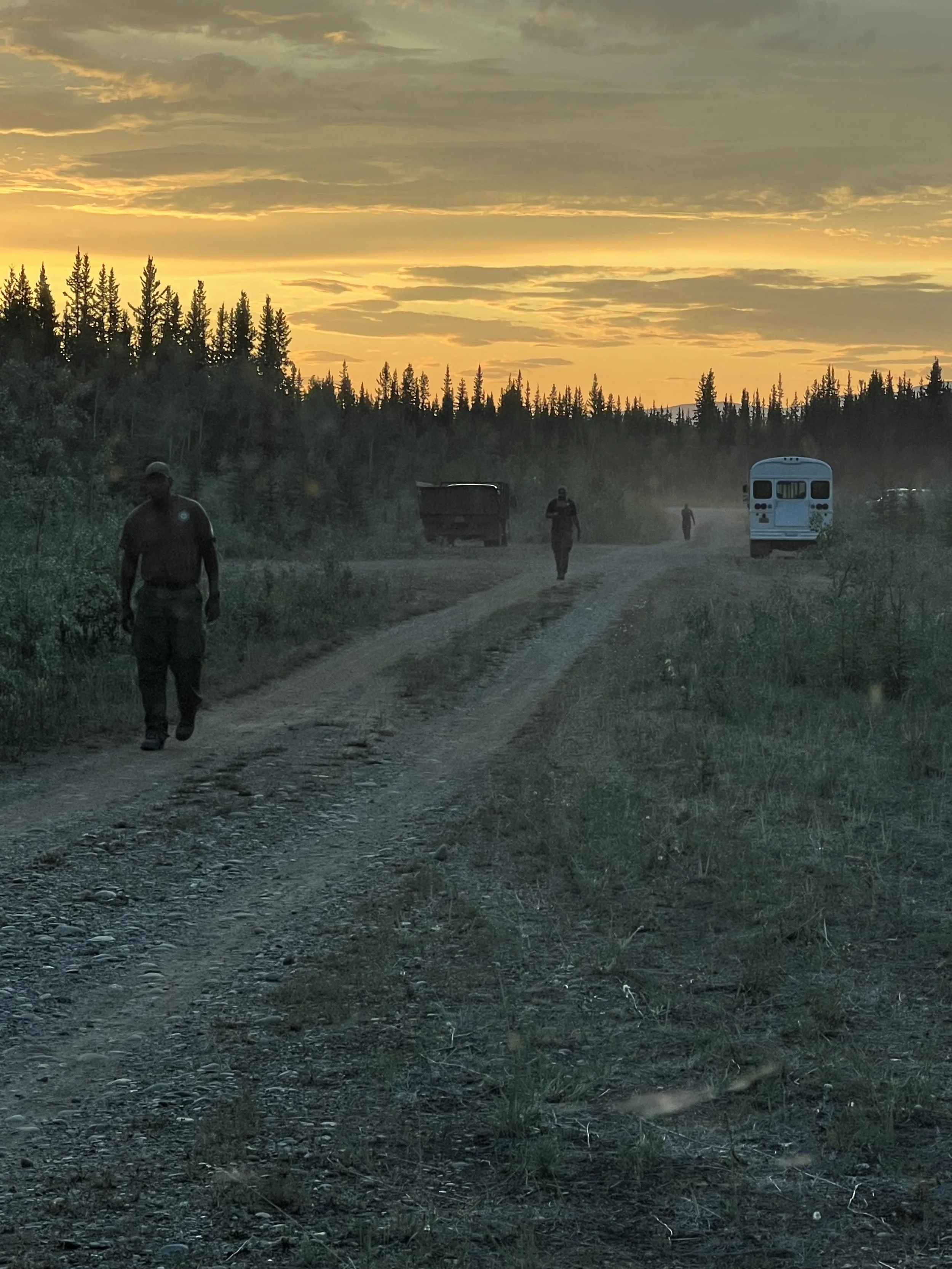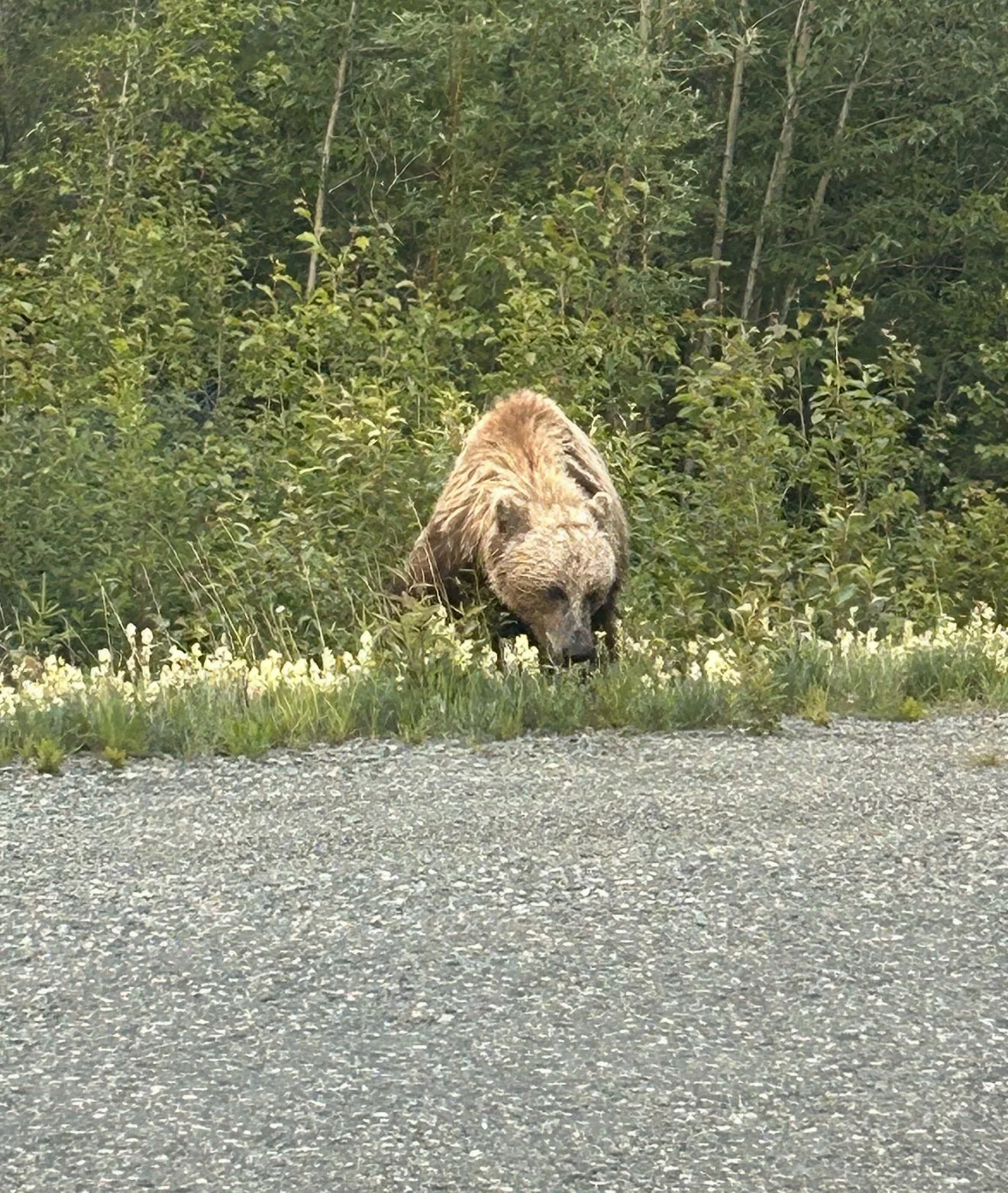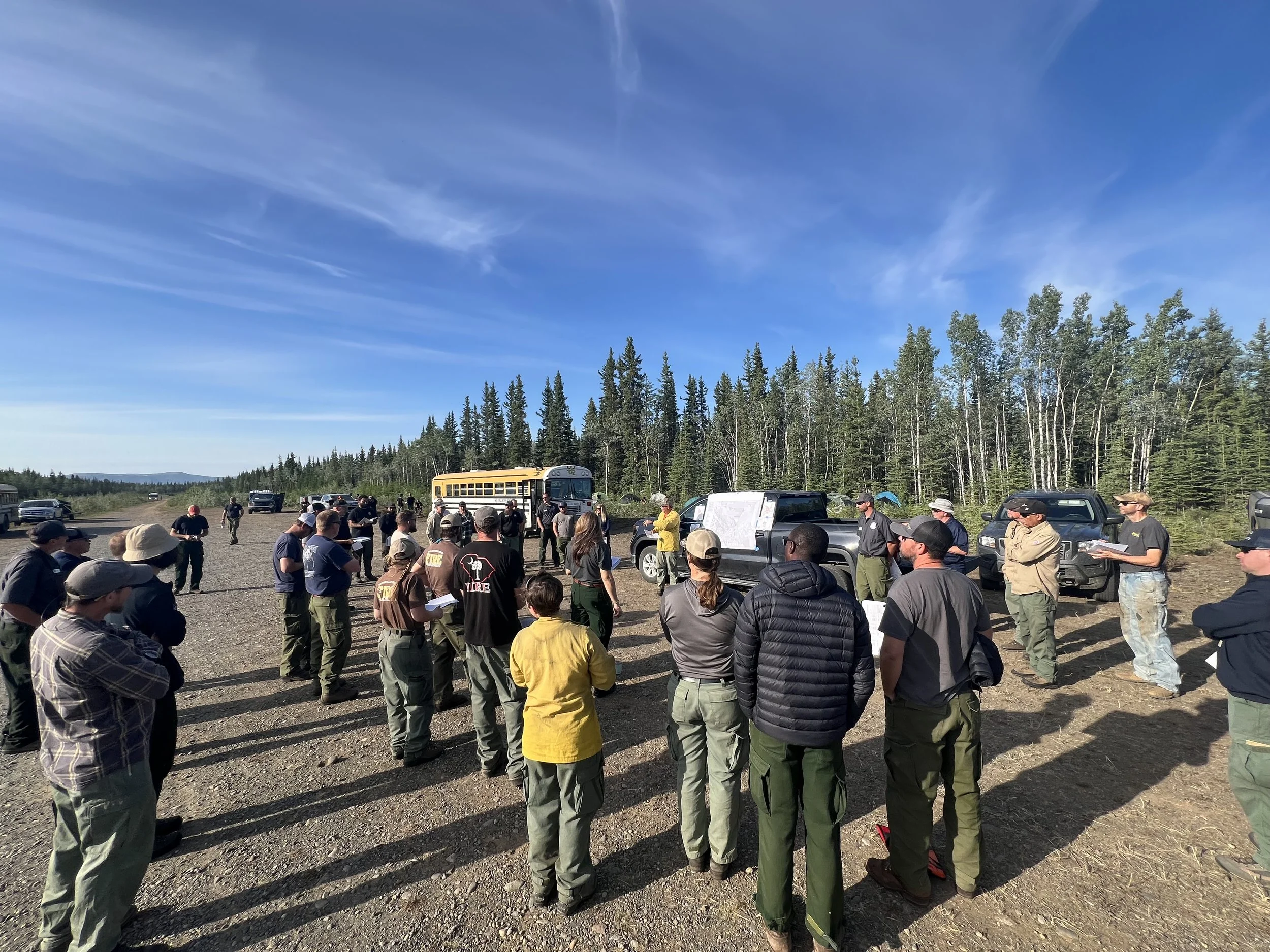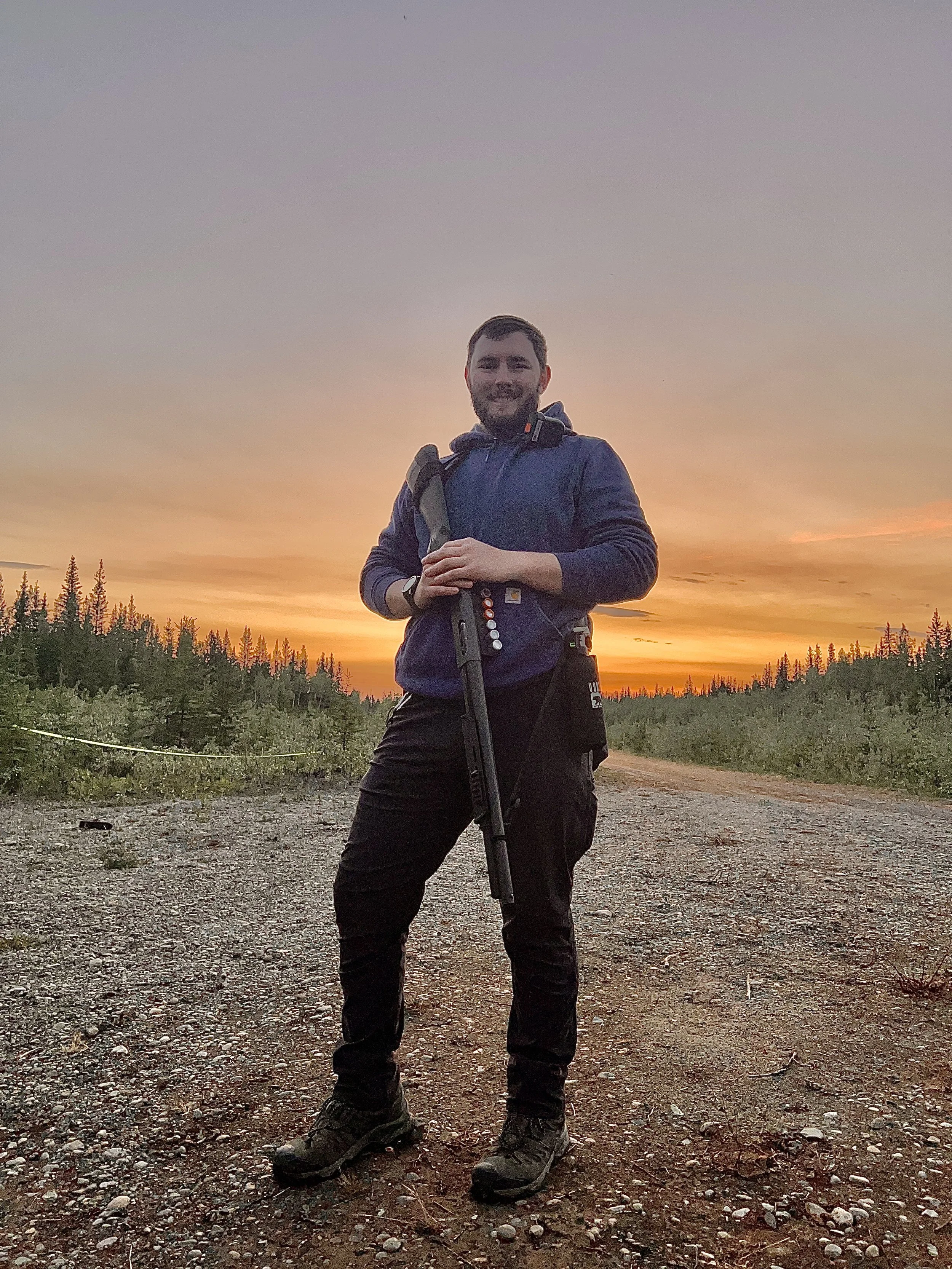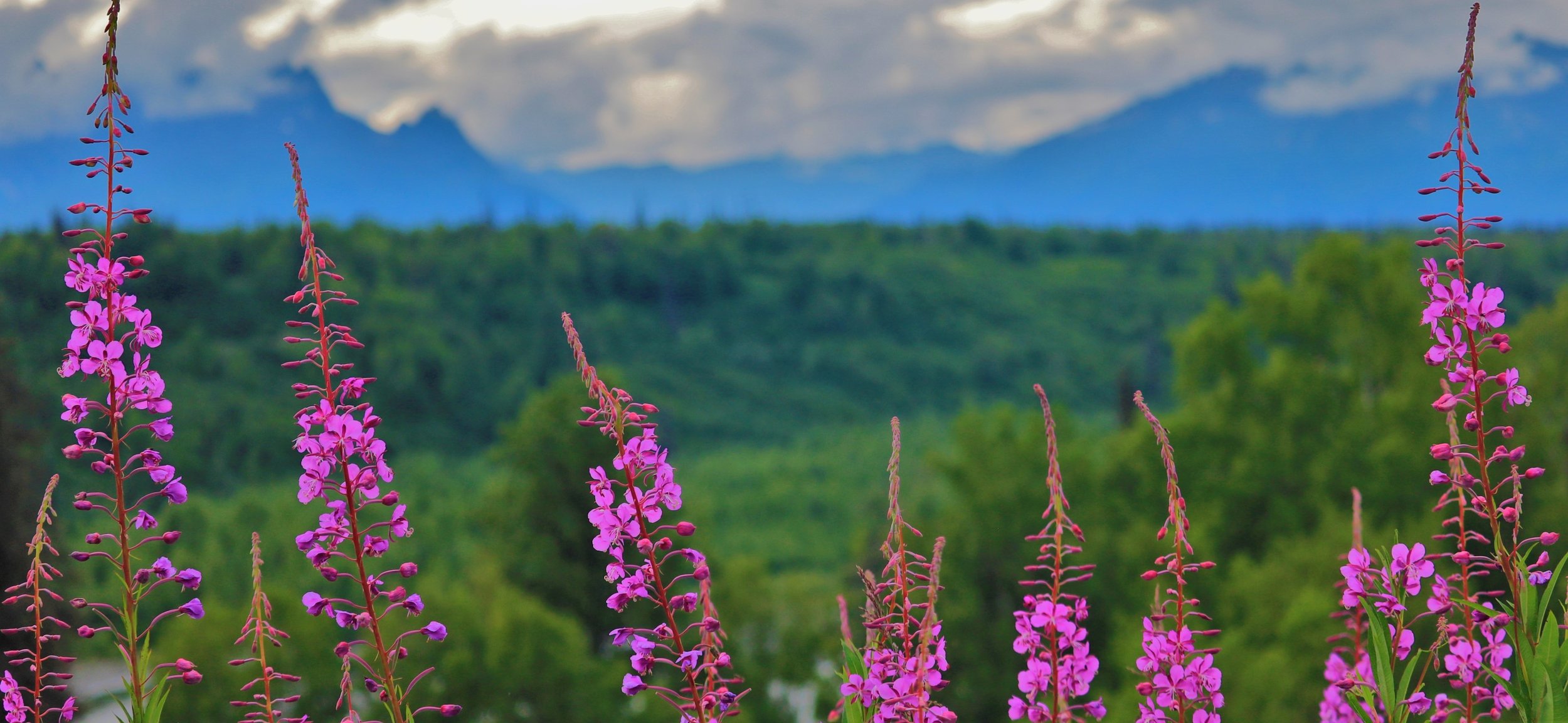
Projects and partners
University of Alaska Fairbanks
National Parks Service
U.S. Fish and Wildlife Service
Bureau of Land Management
Alaska Department of Fish and Game
Alaska Department of Natural Resources
Wildlife Conservation Society
Tanana Valley Watershed Association
National Ecological Observation Network (NEON)
Kingfischer Consulting
Fjord and Fish Sciences
And more!
Our partners and funders
Project Highlights
Cripple Creek stream restoration
Collaborators: U.S. Fish and Wildlife Service, Fairbanks Soil and Water Conservation District
Fragmentation of freshwater habitat negatively impacts riverine fish communities and habitat restorations—which often include retrofitting/replacing culverts—are conducted widely to restore stream connectivity. Monitoring fish assemblages in impaired habitats prior to restorations is necessary to justify the significant costs required for restoration work and to demonstrate the efficacy of habitat improvements. To characterize the fish community prior to an ongoing restoration of Cripple Creek in Interior Alaska, fish catch data from 2018–2020 were analyzed for abundance, distribution, and size trends with a focus on the two most prevalent species, Lake Chub (Couesius plumbeus), and Longnose Sucker (Catostomus catostomus). We found that the weekly mean length of Lake Chub increased during the 2020 summer, suggesting that fish are using the Cripple Creek drainage for rearing. Mean fish length was greater, and abundance was consistently lower in an upper section of the creek compared to the lowest section, supporting the idea that unrestored culverts limit fish passage, especially for smaller fish with weaker swimming abilities. Additionally, we recorded the first juvenile Chinook Salmon (Oncorhynchus tshawytscha) observed in the Cripple Creek drainage. These findings provide justification for the ongoing Cripple Creek restoration project and suggest that fish passage improvements are necessary in Interior Alaska. We are actively involved in ongoing biomonitoring, post-restoration evaluation, and future project planning.
Abnormally high piscicolid leech infestations on Northern Pike in Interior Alaska
Collaborators: Kevin Fraley (Wildlife Conservation Society), Morag Clinton (Sitka Sound Science Center), Taylor Cubbage (Alaska Department of Fish and Game), and Joe Spencer (Alaska Department of Fish and Game and University of Alaska Fairbanks)
Fragmentation of freshwater habitat negatively impacts riverine fish communities and habitat restorations—which often include retrofitting/replacing culverts—are conducted widely to restore stream connectivity. Monitoring fish assemblages in impaired habitats prior to restorations is necessary to justify the significant costs required for restoration work and to demonstrate the efficacy of habitat improvements. To characterize the fish community prior to an ongoing restoration of Cripple Creek in Interior Alaska, fish catch data from 2018–2020 were analyzed for abundance, distribution, and size trends with a focus on the two most prevalent species, Lake Chub (Couesius plumbeus), and Longnose Sucker (Catostomus catostomus). We found that the weekly mean length of Lake Chub increased during the 2020 summer, suggesting that fish are using the Cripple Creek drainage for rearing. Mean fish length was greater, and abundance was consistently lower in an upper section of the creek compared to the lowest section, supporting the idea that unrestored culverts limit fish passage, especially for smaller fish with weaker swimming abilities. Additionally, we recorded the first juvenile Chinook Salmon (Oncorhynchus tshawytscha) observed in the Cripple Creek drainage. These findings provide justification for the ongoing Cripple Creek restoration project and suggest that fish passage improvements are necessary in Interior Alaska. We are actively involved in ongoing biomonitoring, post-restoration evaluation, and future project planning.
Streambank stabilization
Collaborators: Tanana Valley Watershed Association, U.S. Fish and Wildlife Service, and the Alaska Department of Fish and Game
We are partnering with the Tanana Valley Watershed Association, the U.S. Fish and Wildlife Service, and the Alaska Department of Fish and Game to conduct and support streambank stabilization projects in 2025. We are actively seeking to increase our involvement in stream restorations and streambank stabilization, including for private landowners, so reach out if you need help completing a project. Check back in for more details soon!
Yukon River drainage Chum Salmon pre-spawn mortality rates and potential drivers
Project PI: Kevin Fraley (Wildlife Conservation Society)
Collaborator: Wyatt Snodgrass (U.S. Fish and Wildlife Service)
Funder: U.S. Bureau of Land Management
The Wildlife Conservation Society, U.S. Fish and Wildlife Service, and Tributary Research Consulting recently had a study funded to investigate potential vulnerabilities of spawning Chum Salmon (Oncorhynchus keta) in Yukon River tributaries. Prespawn mortality is a phenomenon in which adult salmon arrive at the spawning grounds, but fail to successfully spawn, resulting in retention of unused gametes within the bodies of expired fish. Prespawn mortality has been documented to occur in Yukon River drainage Chum Salmon, which are declining in abundance and have not been available for harvest by subsistence fishers in several years, yet the rates and impact of this phenomenon are unknown. Thus, the goal of this project is to characterize rates and possible causes of prespawn mortality in Yukon River Chum Salmon in order to generate a correction factor (“realized escapement” vs in river escapement) that managers can apply to escapement data to enhance the accuracy of spawning salmon abundance estimates with respect to spawning success. Additionally, the project may offer insights into other factors affecting Chum Salmon population declines. The figures presented here represent theoretical relationships and are not derived from real data. Ongoing research will assess the accuracy of these hypothesized relationships.
University of Alaska Fairbanks Field Firearms Safety Film
Collaborators: UAF FRAME Team, Bethany Graves, and UAF Rifle Coaches Will Anti and Randi Loudin
In addition to the bear defense classes that we host for UAF and numerous other organizations, we are partnering with UAF to produce a firearms safety film for researchers who use firearms for bear defense in the field. The film was completed in the Summer of 2025 and will be released soon!
Subsistence Foods Baseline Contaminants Report
Project PI: Dr. Morgan Bender (Fjord & Fish Sciences)
Funder: Oil Spill Recovery Institute
We partnered with Fjord & Fish Sciences to conduct a comprehensive literature review and meta-analysis about Polycyclic Aromatic Hydrocarbons (PAH) contaminants in marine foods. This project includes over 260,000 data points from 2300 individual samples across Alaska’s oceans and represents the first statewide meta-analysis focused exclusively on hydrocarbon contamination in Alaskan seafood.
We summarized how subsistence harvest compares to PAH sampling effort across five broad regions in Alaska. We then took the analysis further by comparing regional PAH sampling patterns across important taxonomic groups, including fish, marine mammals, and marine invertebrates. Finally, we provided our recommendations for future research and sampling efforts to focus on areas with high harvest and low prior sampling efforts. Overall, this work will be critical in understanding how marine hydrocarbon contamination may be affecting Alaskans’ public health and food security.
Stay tuned for updates! The final report will be released in Fall 2025.
Bear Guarding for Wildland Firefighters
2025 was a big fire year for Alaska! With many wildfires across the state, crews from all across the lower 48 were called up to protect people and infrastructure from the fires. Tributary Research Consulting provided bear protection services to keep the firefighters and their camps safe during firefighting operations in July.
Do you need bear safety training or bear guarding services? Reach out today!
Contact us
Interested in working together? Fill out some info and we will be in touch shortly.

